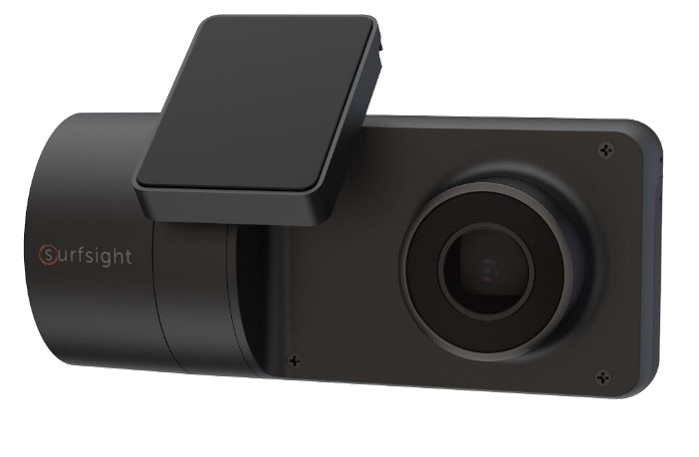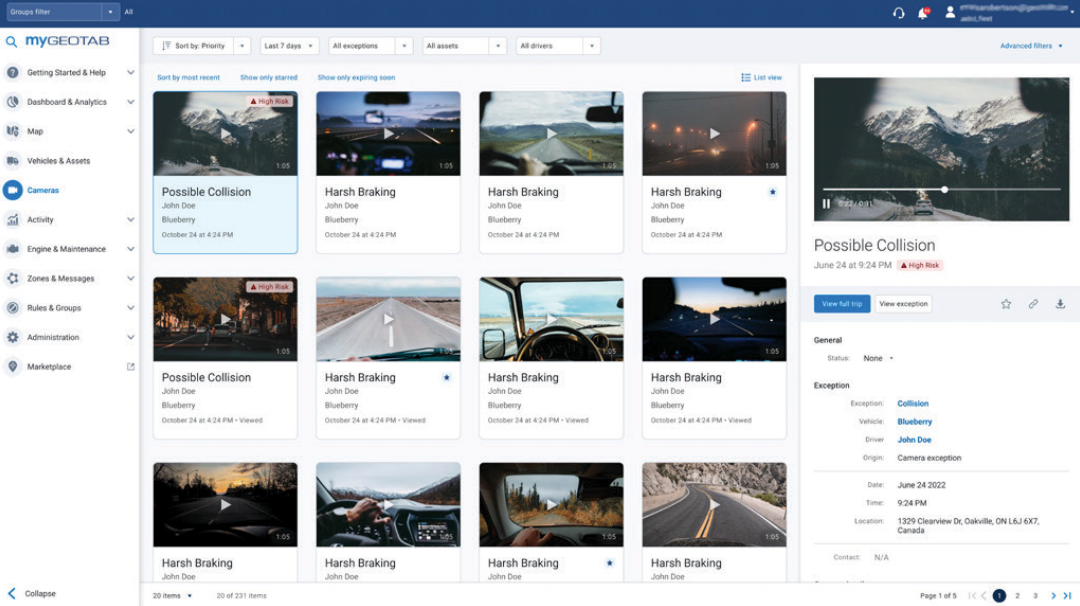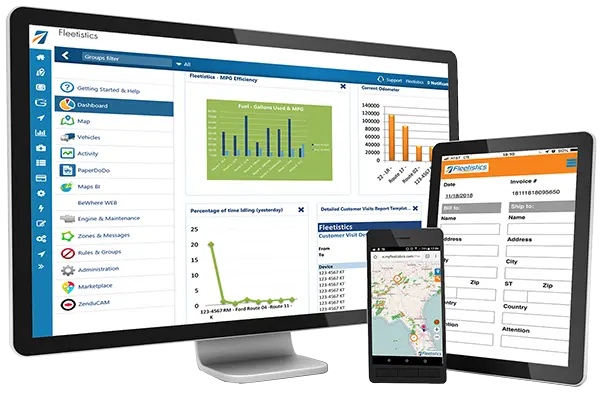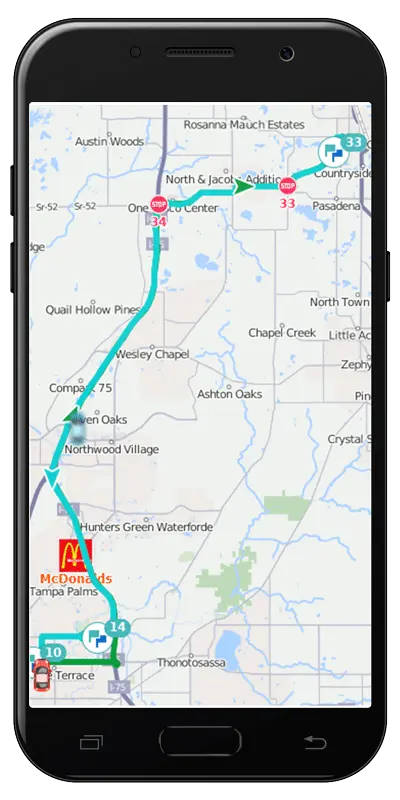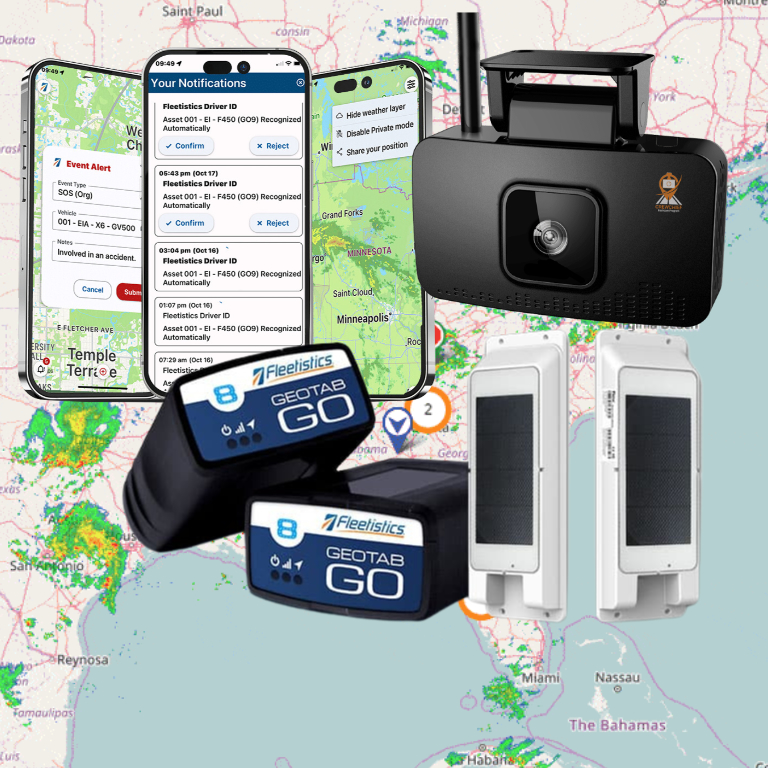AI Dashcams for Fleets
In the realm of fleet management, safety is paramount. AI dashcams have emerged as a game-changer in this regard like GPS tracking in the late 1990s.
These advanced devices, often powered by artificial intelligence, offer more than just recording capabilities. They actively contribute to fleet safety, enhancing operational efficiency and compliance.
This article looks into the emerging market of AI dashcams for fleets. We explore their features, benefits, and the role they play in promoting safer driving practices. Whether you’re a fleet manager, a safety officer, or a commercial vehicle operator, this will provide valuable insights.
Understanding AI Dashcams and Their Impact on Fleet Safety
AI dashcams, or artificial intelligence dashcams, are advanced devices installed in vehicles to create better vehicle use data. They capture real-time video and audio data, providing a comprehensive view of the road and driver behavior.
Unlike traditional dashcams, AI dashcams incorporate machine learning and computer vision technologies. These features enable the device to analyze the captured data and make intelligent decisions.
For instance, AI dashcams can detect risky driving behaviors such as following too close, not wearing a seatbelt, falling asleep, talking and a cell phone and more. They can then alert the driver or fleet manager, promoting immediate corrective action, potentially avoiding an accident.
The impact of AI dashcams on fleet safety is significant:
- They enhance real-time monitoring and incident alerts.
- They contribute to driver behavior analysis and training.
- They aid in accident reconstruction and insurance claims.
- They integrate with fleet management systems and telematics.
- They support compliance with safety regulations and standards.
By leveraging AI dashcams, fleets can significantly reduce accidents and safety incidents, fostering a culture of safety and responsibility.
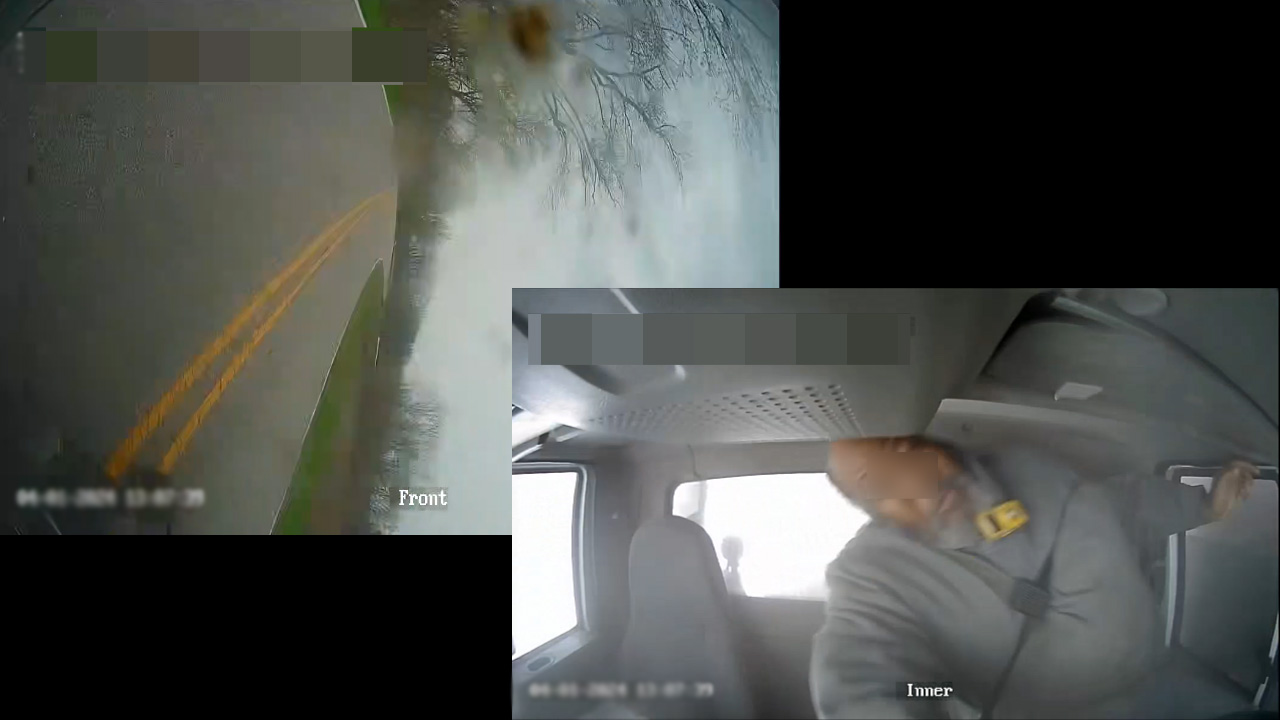
Real-Time Monitoring and Incident Alerts: A Game Changer for Fleet Management
Real-time monitoring is a crucial feature of AI dashcams. It allows fleet managers to keep a close eye on their vehicles and drivers, no matter where they are. In the image above, if an AI dashcam was being used, it may have been able to alert the driver when he “zoned out” and took the turn to fast.
This feature is particularly useful in identifying risky behaviors or incidents as they happen. It enables immediate intervention, potentially preventing accidents or violations.
Incident alerts, another key feature, provide instant notifications about potential risks. These could include hard braking, sudden acceleration, or lane departure.
Together, real-time monitoring and incident alerts revolutionize fleet management, making it more proactive and safety-focused.
The Role of AI Dashcams in Driver Behavior Analysis and Training
AI dashcams play a significant role in analyzing driver behavior. They capture and analyze data on driving habits, helping identify areas of concern.
This data is invaluable for driver training programs. It provides concrete examples of both good and bad driving practices, making training more effective. It may one day be possible to so accurately predict which drivers are high risk that they not allowed to drive.
In essence, AI dashcams serve as a powerful tool for promoting safer driving habits. They contribute to a culture of safety within the fleet, ultimately reducing the risk of accidents.
AI Dashcams in Accident Reconstruction and Insurance Claims
AI dashcams are instrumental in accident reconstruction. They provide clear, objective footage of incidents, helping to establish the sequence of events. This footage is often crucial in insurance claims. It can serve as irrefutable evidence, speeding up the claims process and ensuring fair settlements.
In conclusion, AI dashcams not only help prevent accidents but also play a vital role in managing the aftermath. They provide a reliable, unbiased account of incidents, simplifying accident reconstruction and insurance claims.
Integrating AI Dashcams with Fleet Management Systems and Telematics
AI dashcams can be seamlessly integrated with existing fleet management systems and telematics. This integration allows for a comprehensive view of fleet operations.
The data from AI dashcams can enhance the insights provided by telematics. It can help identify patterns and trends in driver behavior and vehicle performance.
In essence, the integration of AI dashcams with fleet management systems and telematics can significantly enhance fleet safety and efficiency. It provides a holistic approach to fleet management, ensuring optimal performance and safety.
Cost-Benefit Analysis: Are AI Dashcams Worth the Investment?
Investing in AI dashcams can seem like a significant expense. However, the long-term benefits often outweigh the initial costs. AI dashcams can reduce expenses related to accidents and maintenance. They can also lower insurance premiums by promoting safer driving practices.
Moreover, the data provided by AI dashcams can help optimize fleet operations. This can lead to significant cost savings in the long run. In conclusion, while AI dashcams require an upfront investment, they can provide substantial returns in terms of safety, efficiency, and cost savings.
Legal and Privacy Considerations When Implementing AI Dashcams in Fleets
Implementing AI dashcams in fleets involves certain legal and privacy considerations. It’s crucial to ensure compliance with data protection laws.
Continuous monitoring of drivers can raise privacy concerns. It’s important to communicate the purpose and benefits of AI dashcams to the drivers.
Moreover, the data collected by AI dashcams should be securely stored and managed. This is to prevent unauthorized access and protect sensitive information.
In conclusion, while AI dashcams can enhance fleet safety, it’s essential to address legal and privacy considerations effectively.
Choosing the Right AI Dashcam for Your Fleet: Factors to Consider
Selecting the right AI dashcam for your fleet involves careful consideration of several factors. These include the specific needs of your fleet, the features of the dashcam, and the support provided by the vendor.
Key factors to consider include:
- The reliability and durability of the dashcam
- The quality of real-time monitoring and alerts
- The effectiveness of the driver behavior analysis
- The ease of integration with existing systems
- The quality of customer support
In conclusion, choosing the right AI dashcam can significantly enhance fleet safety and efficiency.







